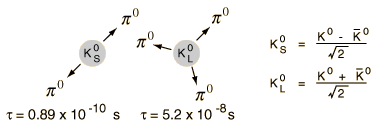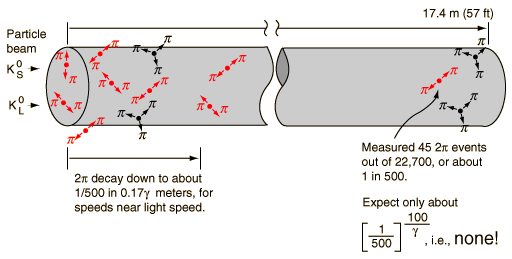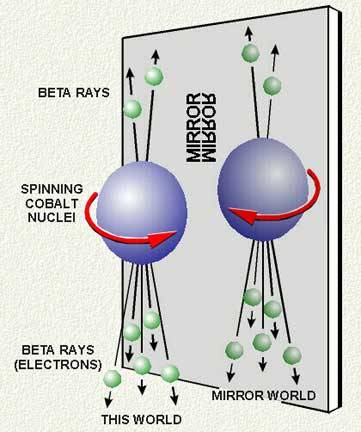#antiparticles
Charge, Parity and Time Reversal (CPT) Symmetry
From our everyday experience, it is easy to conclude that nature obeys the laws of physics with absolute consistency. However, several experiments have revealed certain cases where these laws are not the same for all particles and their antiparticles. The concept of a symmetry, in physics, means that the laws will be the same for certain types of matter. Essentially, there are three different kinds of known symmetries that exist in the universe: charge ©, parity (P), and time reversal (T). The violations of these symmetries can cause nature to behave differently. If C symmetry is violated, then the laws of physics are not the same for particles and their antiparticles. P symmetry violation implies that the laws of physics are different for particles and their mirror images (meaning the ones that spin in the opposite direction). The violation of symmetry T indicates that if you go back in time, the laws governing the particles change.
There were two American physicists by the names of Tsunng-Dao Lee and Chen Ning Yang suggested that the weak interaction violates P symmetry. This was proven by an experiment which was conducted with radioactive atoms of colbalt-60 that were lined up and introduced a magnetic field to insure that they are spinning in the same direction. In addition, it was also found that the weak force also does not obey symmetry C. Oddly enough, the weak force did appear to obey the combined CP symmetry. Therefore the laws of physics would be the same for a particle and it’s antiparticle with opposite spin.
Surprise, surprise! There was a slight error in the previous experiment that was just mentioned. A few years later, it was discovered that the weak force actually violates CP symmetry. Another experiment was conducted by two physicists named Cronin and Fitch. They studied the decay of neutral kaons, which are mesons that are composed of either one down quark (or antiquark) and a strange antiquark (or quark). These particles have two decay modes where one will decay much faster than the other, even though they all have identical masses. The particles with the longer lifetimes will decay into three pions (denoted with the symbol π0), however the kaon ‘species’ with the shorter lifetimes will only decay into two pions. They had a 57 foot beamline, where they only expected to see the particles with slower decay rate at the end of the beam tube. In astonishment, one out of every 500 decays where from the kaons species that had a shorter lifetime. The main conflict with seeing the short-lived mesons at the end of the beam tube is because they are traveling relavistic speeds and therefore ignoring the time dilatationthat they are supposed to undergo. Thus, the experiment has shown that the weak force causes a small CP violation that can be seen in kaon decay.


Post link

